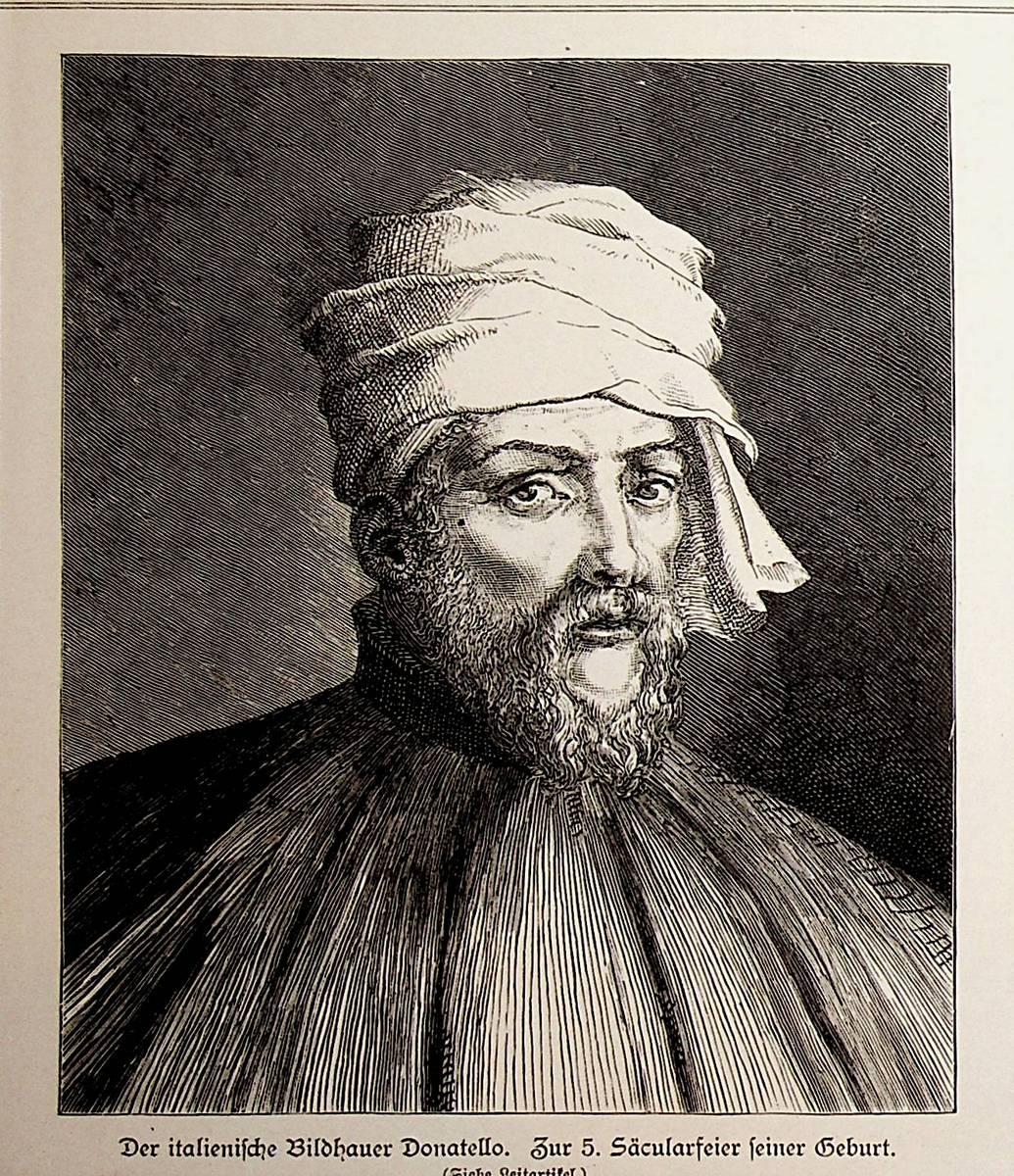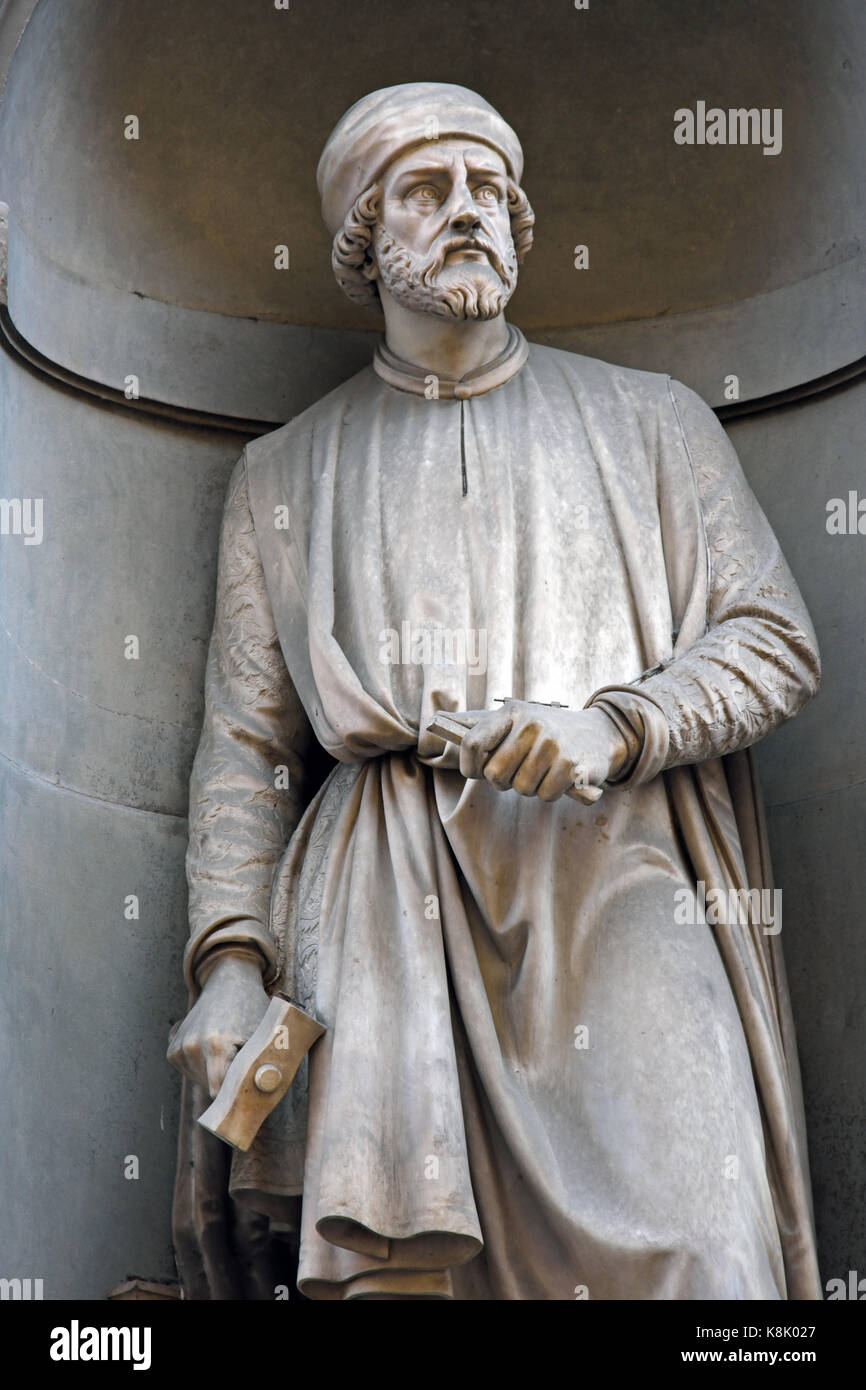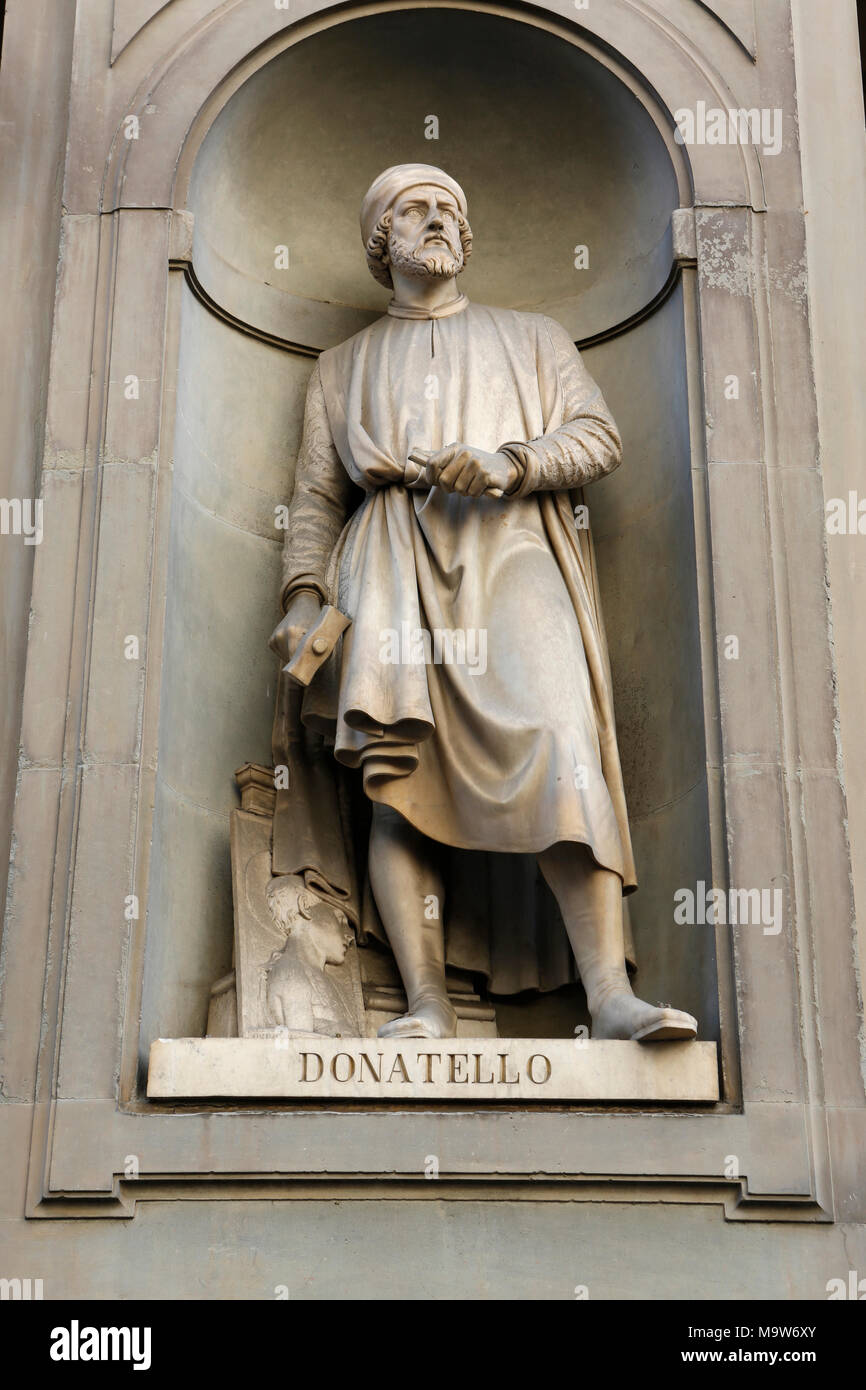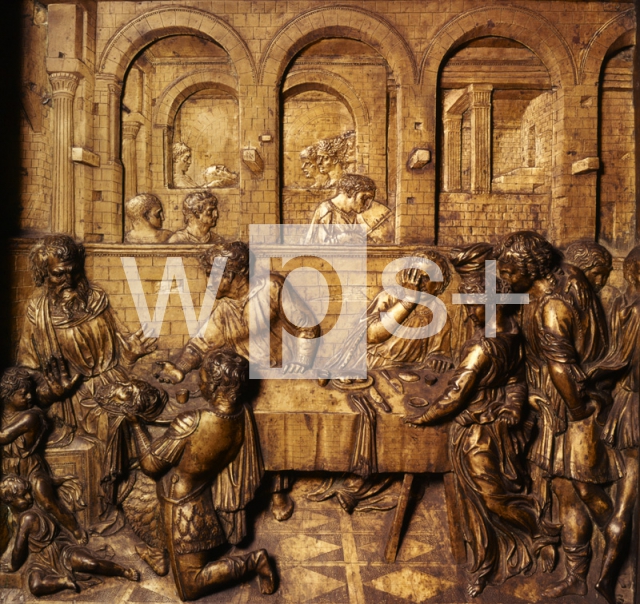
Pin su Donatello
Donato Di Niccolò Di Betto Bardi (Donatello) 10 Famous works of Donatello (Florence, Italy, 1386-Ibidem, December 13, 1466) Donatello, as he was widely known, was, is and has been one of the masters of the great statuary and of splendid reliefs; his art coined the prodigies that emerge from the creative condition of human beings and his legacy.

Donato di Niccolò di Betto Bardi (Florence c. 1386 Florence December
Donato di Niccolò di Betto Bardi, universally known as Donatello, was born in Florence around 1386 and died there in 1466. The powerful expressivity of his art made him the greatest sculptor of the early Renaissance.

DONATELLO, Donatello, (Donato di Niccolò di Betto Bardi) (ca. 13861466
Donato di Niccolò di Betto Bardi, better known as Donatello, was an Italian sculptor of the Renaissance. Born in Florence, he studied classical sculpture and used this to develop a complete Renaissance style in sculpture, whose periods in Rome, Padua, and Siena introduced to other parts of Italy a long and productive career.

Épinglé par Hervé LEYRIT sur DONATELLO Donato di Niccolò di Betto
Donatello (c. 1386-1466 CE), full name Donato di Niccolo di Betto Bardi, was an Italian Renaissance artist best known for his sculptures such as the striking bronze figure of David now in the Bargello museum of his native Florence. Donatello was influential in popularising the classicizing style where Renaissance artists looked to the surviving works of antiquity for inspiration.

Donatello ( Donato di Niccolò di Betto Bardi 1386 1466, better known
Donatello Born Donato di Niccolò di Betto Bardi c. 1386 Florence, Italy Died Dec. 13 1466 (at age 80) Florence, Italy Nationality Florentine, Italian Education Lorenzo Ghiberti Movement Early Renaissance Field Sculpture Famous Artwork by Donatello Saint Mark Zuccone The Feast of Herod David Equestrian statue of Gattamelata Judith and Holofernes There are many artists

Donatello (Donato di Niccolò di Betto Bardi (1386 1466) Madonna del
Donato di Niccolò di Betto Bardi is recognized as one of the most prolific artists from the Italian Renaissance era. He's often known simply as Donatello and is regarded as one of the most talented sculptors to have ever lived. Many of his works are considered to be among the greatest masterpieces from history.

Donatello, il maestro scultore del Rinascimento
Donatello was born Donato di Niccolo di Betto Bardi in Florence, Italy, sometime in 1386. His friends and family gave him the nickname "Donatello.". He was the son of Niccolo di Betto Bardi, a.

AFTER DONATO DI NICCOLO DI BETTO BARDI, CALLED DONATELLO (CIRCA 1386
It is common thought that Donato di Niccolo di Betto Bardi (generally known as Donatello) was born in 1386 in Florence to Niccolo di Betto Bardi. However, the date is conjectural, based on a declaration of income submitted by the artist in 1433, stating his age at 47. He received his childhood education in the house of the Martelli family, one.

Donatello, Statue von Donatello von Donato di Niccolò di Betto Bardi
Donato di Niccolò di Betto Bardi, known as Donatello, died on 13 December 1466 in Florence. Widely recognized as one of the most innovative artists of the Renaissance, Donatello worked in marble, bronze, and terra-cotta. Donatello was the first to use one-point linear perspective, invented by his friend Filippo Brunelleschi, in his relief.

DONATELLO (Donato di Niccolò di Betto Bardi)|ヘロデの宴 美術 wps+(ワールド・フォト
Donato di Niccolò di Betto Bardi, also known as Donatello, was a sculptor of the Italian Renaissance. Born in Florence circa 1386, he studied classical sculpture and developed a unique Renaissance style. He worked in stone, bronze, wood, clay, stucco and wax, and had several assistants. Though his best-known works were mostly statues in the.

Donatello (1386 1466) Statua equestre, Arte rinascimentale, Equestre
Donato di Niccolò di Betto Bardi is assumed to have possibly been born in Florence in 1386. The date is based on a statement of revenue given by the artist in 1433, in which he stated his age as 47. He was educated as a youngster at the home of the Martelli family, counted amongst Florence's wealthiest families.

Donatello (Donato di Niccolò di Betto Bardi (Firenze, 1386? Firenze
Donato di Niccolò di Betto Bardi, better known as Donatello, was born in Florence in 1386. Sculptor, goldsmith and also draftsman, he is considered one of the fathers of the Italian Renaissance, together with his friend Filippo Brunelleschi and Masaccio, as well as creator and highest representative of Florentine humanistic classicism.

Donatello, vero nome Donato di Niccolò di Betto Bardi (Firenze 1386
Donato di Niccolò di Betto Bardi (c. 1386 - 13 December 1466), better known as Donatello (Italian: [donaˈtɛllo]), was an Italian Renaissance sculptor from Florence. He studied classical sculpture and used this to develop a complete Renaissance style in sculpture, whose periods in Rome, Padua and Siena introduced to other parts of Italy a.
.jpg)
CIRCLE OF DONATO DI NICCOLO DI BETTO BARDI, KNOWN AS DONATELLO (1386
Donatello. Donato di Niccolò di Betto Bardi (circa 1386 - December 13, 1466) was an early Renaissance Italian artist and sculptor from Florence. He is, in part, known for his work in bas-relief, a form of shallow relief sculpture that, in Donatello's case, incorporated significant 15th century developments in perspectival illusionism.

Donatello (Donato di Niccolò di Betto Bardi 1386 1466, besser bekannt
Florence-born Donato di Niccolò di Betto Bardi (c.1386-1466), universally known as Donatello, was arguably the greatest sculptor of all time through his powerful sculpture creations that continue to live on to this day. The artist was in the vanguard of a revolution in sculptural practice in the early Renaissance.

AFTER DONATO DI NICCOLO DI BETTO BARDI, CALLED DONATELLO (CIRCA 1386
Donatello (diminutive of Donato) was the son of Niccolò di Betto Bardi, a Florentine wool carder. It is not known how he began his career, but it seems likely that he learned stone carving from one of the sculptors working for the cathedral of Florence (the Duomo) about 1400.Sometime between 1404 and 1407 he became a member of the workshop of Lorenzo Ghiberti, a sculptor in bronze who in 1402.